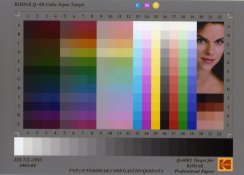nickandre
Member
So, I had an idea. I've been hunting for a way to figure out which film gives me which colors. I'm debating doing a test to compare the colors which different films give. I would shoot a bunch of different films, print them, and then post the results as to which gave the which colors when shooting a standard scene and probably compare it to a digital image which I'll try to get as close to reality as I can. This would settle which films gave the "best" colors.
Negative films:
Fuji Superia 100 and 400
Fuji Reala 100/Kodak Gold 100
Fuji 160S and C/Kodak 160NC and VC
Kodak Ektar 100/my roll of 100 UC
Slides:
Velvia/E100VS
Sensia or Astia
E100G
Kodachrome
First off, has a test like this already been done?
If not, would people be interested in seeing this? Should I scrap all this and just continue taking pictures? I guess the reason I'm doing this is because I have started shooting Ektar because I liked the colors it gave me. I found that my prints from Reala were somewhat dull and grainy, and my pictures from Ektar are sharp and colorful up to 11x14. This would be to make sure I wasn't getting ripped off.
I could also compare Kodak to Fuji. I've heard talk but never seen direct comparisons.
Any thoughts or comments?
Negative films:
Fuji Superia 100 and 400
Fuji Reala 100/Kodak Gold 100
Fuji 160S and C/Kodak 160NC and VC
Kodak Ektar 100/my roll of 100 UC
Slides:
Velvia/E100VS
Sensia or Astia
E100G
Kodachrome
First off, has a test like this already been done?
If not, would people be interested in seeing this? Should I scrap all this and just continue taking pictures? I guess the reason I'm doing this is because I have started shooting Ektar because I liked the colors it gave me. I found that my prints from Reala were somewhat dull and grainy, and my pictures from Ektar are sharp and colorful up to 11x14. This would be to make sure I wasn't getting ripped off.
I could also compare Kodak to Fuji. I've heard talk but never seen direct comparisons.
Any thoughts or comments?













